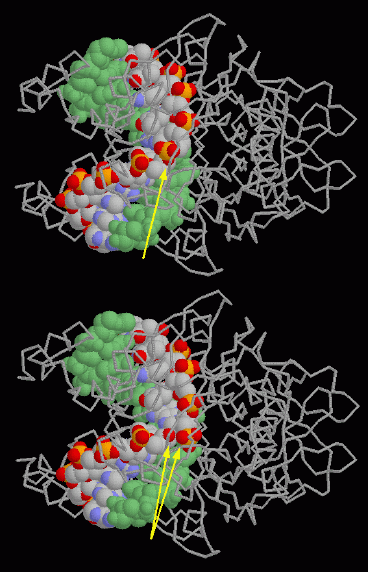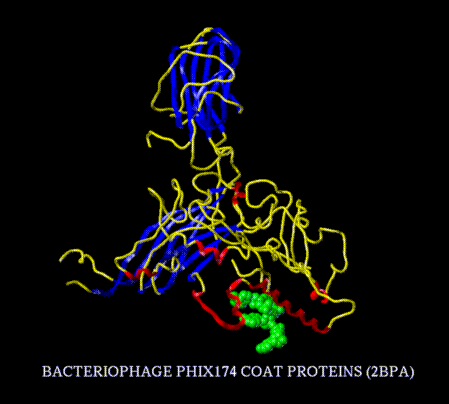Activity
2 - Student Learning Strategies:
IDENTIFICATION OF PHI X 174 RF DNA BY RESTRICTION MAPPING

Activity
2 - Student Learning Strategies:
IDENTIFICATION OF PHI X 174 RF DNA BY RESTRICTION MAPPING

(Image
from www.rcsb.org/pdb/molecules/
pdb8_3.html
Protein Data Bank, 2003)
PURPOSE
Restriction endonucleases, or restriction enzymes, are enzymes that aid in the
digestion of double-stranded DNA. They are like highly specialized scissors
that can only cut within their own DNA recognition sequence. Recognition sequences
typically consist of 4 to 6 DNA nucleotides in palindrome form, so that the
two strands of the double helix have the same sequence when read in opposite
directions (unlike our 26-letter alphabet, the DNA alphabet consists of only
4 nucleotide letters: G, A, T, and C). Nowadays, more than 3500 restriction
enzymes have been identified. About 500 have been commercialized, making them
an extremely versatile and accessible tool in our molecular biology toolbox.
In this activity
we will use restriction enzymes to analyze a double-stranded, circular form
of PhiX174 DNA (called RF DNA for Replicative Form). Since all of its 5386 base
pairs (commonly abbreviated as 5386 bp or 5.39 kb) have been sequenced, we can
predict exactly which DNA fragments should be produced after digestion with
certain restriction enzymes. With the help of a free web-based tool called NEBcutter,
we can also predict what will happen when we load these DNA fragments onto an
agarose gel for separation by gel electrophoresis. Pores in the agarose gel
are barely big enough to let the DNA fragments pass through. When a mixture
of differently sized DNA fragments are applied to one side of the gel, and a
current is applied across the gel, negatively charged DNA fragments will start
to travel across the gel towards the positive charge. Since larger fragments
will have a harder time squeezing their way through the agarose pores, they
will lag behind the smaller fragments in a predictable way.

(Image from www.rtc.riken.go.jp/jouhou/image/dna-protein/all/all.html, 2003)
KEY CONCEPTS
After this activity, students will be able to: